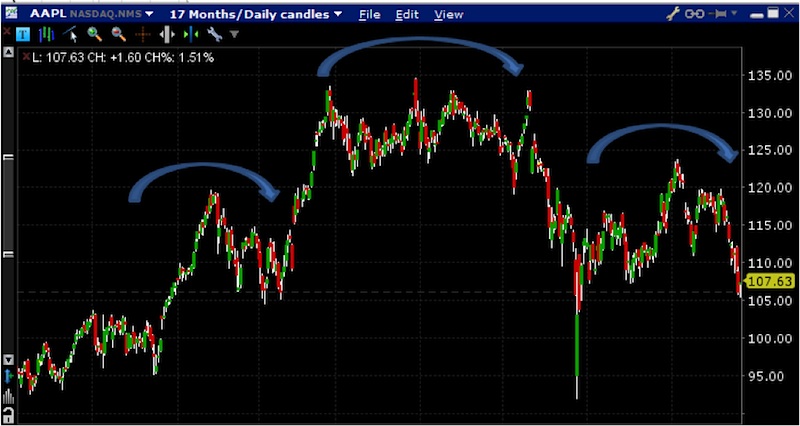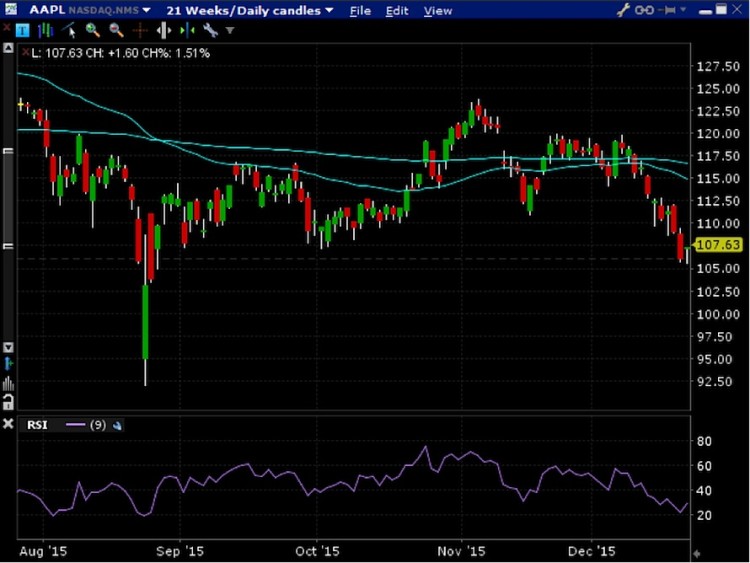Shares of Apple (AAPL) experienced another tough week last week with the popular stock falling 5.5%. AAPL has since rebounded a bit, but there remains a few reasons to be concerned, namely the AAPL head and shoulders pattern that is forming on its stock chart (but more on that later).
Carter Worth of Cornerstone Macro is concerned that the uptrend that started in 2013 has been broken, as has the even longer term trend dating back almost a decade. Worth thinks the stock is a clear sell.
Adding to the technical storm brewing are doubts that the iPhone is maintaining the same market dominance it has in the past; with rivals such as Samsung continuing to capture market share. Most research firms are dropping their estimates for 2016 iPhone shipments.
As mentioned in the opening, Apple stock is also on the cusp of a potentially bearish price pattern: An AAPL head and shoulders pattern has formed. This is a topping pattern that could bring Apple stock price much lower. The neckline for this pattern is right around current levels so be careful.
AAPL Head and Shoulders Pattern?
It’s worth noting, though, that the Relative Strength Index (RSI) on the Apple stock chart is currently sitting around 33 which is on the low end of the scale for the last 6 months. So now may not be the best time for traders to sell.
AAPL is currently trading below both the 50 and 200 exponential moving average and these levels could provide resistance for any bounce attempt.
Fellow See It Market contributor James Bartelloni thinks AAPL is not a buy until it hits the mid 80’s.
Whatever happens, 2016 is shaping up to be an interesting year for shares of AAPL and the markets in general.
Stay safe and Happy Holidays.
Twitter: @OptiontradinIQ
No position in any of the mentioned securities at the time of publication. Any opinions expressed herein are solely those of the author, and do not in any way represent the views or opinions of any other person or entity.










